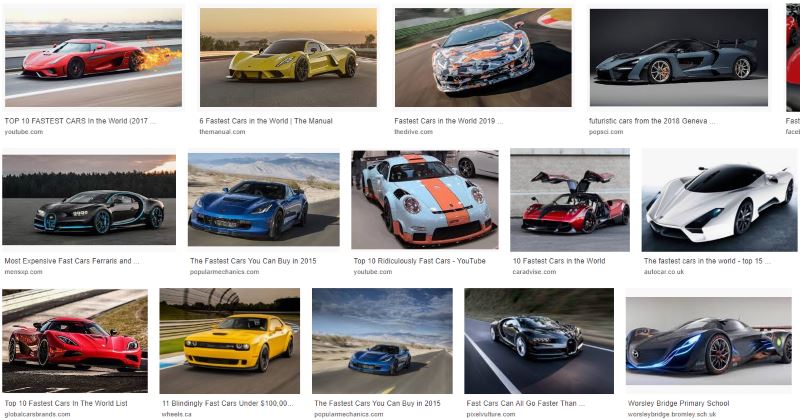You need pictures for your website, your blog or your email marketing. Pictures helps make it look nice, showcases your products and services, breaks up your text, helps with your SEO and each picture is worth a thousand words, according to the old Chinese proverb.
And Social Media demands pictures. I’m not just talking about Instagram and Pinterest but Facebook, Twitter, LinkedIn etc because using pictures helps you post stand out from the crowd. Does anyone even read a “boring” text update these days?
But where do you get your pictures from?
Do you just go to Google, do a search, filter it by images and look for those that appeal? Do you look at other websites and think “that’s a nice picture, I’ll have some of that”.
 Believe it or not, some people still believe that you can use any picture that you find on the internet. It’s OK because it’s there, on the internet, so it’s there for anyone and everyone – isn’t it? Do a Google image search, browse the web, find a picture you like, right-click and choose “Save As” and the picture’s yours to use in any (and every) way you see fit.
Believe it or not, some people still believe that you can use any picture that you find on the internet. It’s OK because it’s there, on the internet, so it’s there for anyone and everyone – isn’t it? Do a Google image search, browse the web, find a picture you like, right-click and choose “Save As” and the picture’s yours to use in any (and every) way you see fit.
That’s the attitude that was very common in the early days of the internet. It wasn’t true then and it isn’t true now.
 Every picture on the internet has been taken by a photographer or created by someone, frequently with a particular purpose in mind. As soon as the image has been created the copyright is automatically assigned to the creator. They don’t have to do anything, they don’t have to register it anywhere, mark it in some way or declare that it’s copyrighted. The mere process of creation automatically creates the copyright at the same time. Even a sketch on a napkin.
Every picture on the internet has been taken by a photographer or created by someone, frequently with a particular purpose in mind. As soon as the image has been created the copyright is automatically assigned to the creator. They don’t have to do anything, they don’t have to register it anywhere, mark it in some way or declare that it’s copyrighted. The mere process of creation automatically creates the copyright at the same time. Even a sketch on a napkin.
So where can you get pictures from

Well, you can still use your Google Image Search, you just have to be a little selective.
Instead of just choosing the first picture you come across, you can filter the images by “usage rights”. Click on the “Tools” button and a fresh line of navigation appears. Click on the “Usage Rights” and choose “Labeled for reuse”.
It is still advisable to check the rights that the publisher has attached to the image but at least you’re looking at images that should be OK for re-use.
But why use a picture created by someone else or a photograph taken by someone else? Far better to create something of your own. That way, you can be sure that it won’t appear on any other website. Use the camera in your phone, use your digital camera if you have one. Just make sure that your pictures are in focus, well lit and focus on the subject.
Alternatively, if your budget can stand it bring in a professional photographer or use a graphic designer. You’ll be sure to get unique, high quality content and the cost may just be a lot less than you expect. If you don’t ask, you’ll never know.
Of course, there are large libraries of stock images where you search for a picture that suits your needs. When you find one you’ll have to purchase a license to use it. Probably the most well known image library is Getty Images, a vast repository of high quality stock photography – but it’s not cheap. Shutterstock is another – and there are several more.
However, if you are working to a really tight budget, there are a number of stock photo sites that have a wide range of images that are actually free to use – here’s a small selection of ones that I turn to when the need arises
What happens if you get caught
All of the big stock photography libraries have software tools that are always crawling the internet. They are sophisticated enough to be able to tell whether you have cropped an image, flipped it left to right or carried out other forms of editing designed to hid the origin of the image – even if you have renamed it.
If you are caught using an unlicensed image you will be sent a letter from the copyright owner’s solicitor demanding payment. There is no way around paying; they will hound you remorselessly, like the Terminator. The demand will be based on how long they think you have been using the image so it could go in to the thousands of pounds. I have known people who have managed to negotiate the fee down, but they have never managed to negotiate it down to zero.
The whole tone of this email exchange in this regard can be very aggressive and unpleasant. Not good if you’re looking to keep your stress levels down.
Even if you “borrow” the image from a website you’ll never know. They may have bought a license to use the image but you haven’t – so you’ll have to pay up.
What’s the solution?
Ensure that you know where every single one of your images has come from and that you have the appropriate rights to use the picture and if you need any help – just give me a call on 01793 238020 or email andy@enterprise-oms.co.uk
